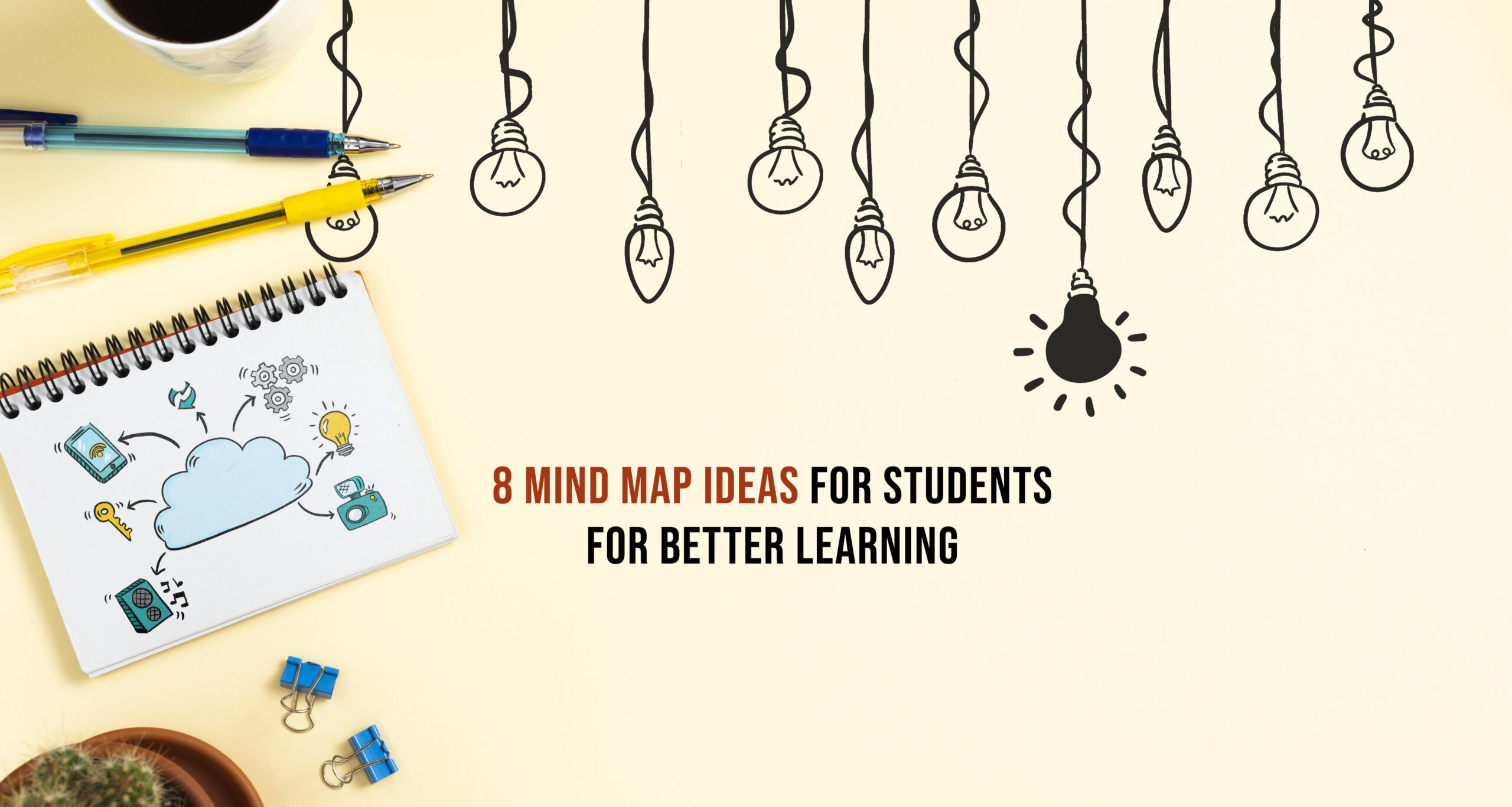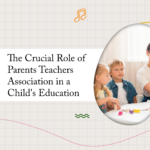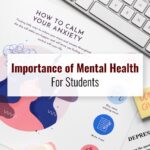
8 Mind Map Ideas for Students for Better Learning
Table of Contents:
- Introduction
- Understanding the meaning of Mind Mapping
- 8 Mind Mapping Activities for Students
Introduction:
Students require efficient tools to assist them in understanding, remembering, and applying knowledge in today’s fast-paced environment where information overload is a constant struggle. For its capacity to promote greater learning, one such tool that has grown in favor recently is mind map ideas for students. Mind mapping activities use visuals to represent knowledge, simplifying complicated subjects and encouraging original thought.
Understanding the meaning of Mind Mapping
The effective and adaptable method of mind mapping is used to represent data, concepts, and ideas visually in a connected and organized way. In order to capture the relationships between various parts, it entails starting with a major topic or idea in the middle of a page and then branching out into subtopics. This technique not only helps to organize ideas and information, but it also fosters creativity, increases memory retention, and improves comprehension. Mind maps can be used in many different contexts, from business settings like project planning and problem-solving to educational ones like essay brainstorming or arranging study materials.
In this article, we will explore eight mind mapping activities that can significantly enhance students’ learning experiences.
Check out the 8 mind map ideas for students listed below:
1. Concept Exploration
Objective: Engage students in exploring a new topic through mind map ideas, encouraging them to brainstorm and connect ideas.
Mind map lesson ideas for students are an excellent approach to introduce students to a new subject or topic. Start by placing the main idea or topic at the top of the mind map. Then, encourage students to branch out by adding subtopics or related ideas. This process allows them to see how different pieces of information connect and interact.
If the main topic is “Renewable Energy Sources,” for example, students can add branches for solar, wind, and hydroelectric power. Each of these subtopics can be broken further into benefits, drawbacks, and real-world applications. This visual presentation not only helps students comprehend the subject’s foundations but also piques their curiosity in learning more.
2. Summarizing Texts
Objective: Use mind maps to condense and visualize key information from textbooks or articles, improving reading comprehension.
Reading lengthy texts can be overwhelming for students. Mind mapping activities can help by breaking down complex information into manageable chunks. After reading a chapter or an article, students can create a mind map summarizing the main points, key terms, and additional details.
This activity enhances reading comprehension because students must identify the most critical information to include in their mind maps. Additionally, it enables students to see how the text is organized and how various concepts go together. As a result, students are better prepared to discuss or write about the material, as they have a clear overview of the content.
3. Problem-Solving Challenges
Objective: Present real-world problems and ask students to brainstorm solutions using mind maps, fostering critical thinking.
Problem-solving is a crucial skill in education and life. Mind mapping activities can be a powerful tool for developing this skill. Present students with real-world problems or scenarios and ask them to create mind maps outlining potential solutions.
For instance, if the problem is “Reducing Plastic Waste in Schools,” students can brainstorm ideas related to recycling programs, reusable containers, and awareness campaigns. The mind map format encourages students to think creatively, consider multiple perspectives, and visualize the interconnectedness of their ideas. It also allows for easy comparison of different solutions, helping students evaluate and refine their thinking.
4. Historical Events Timeline
Objective: Create a visual timeline of historical events using mind maps, enhancing historical context comprehension.
It can be challenging for children to comprehend historical events and their chronological order. By visualizing complicated timelines, mind maps help streamline this procedure.
Assign students a historical era or event and ask them to create a timeline mind map. They can place the central event in the center of the map and branch out with key dates, figures, and significant developments. This activity not only helps students visualize historical sequences but also aids in understanding the context and causality of events.
5. Literary Analysis
Objective: Analyze literature by mapping out character relationships, themes, and plot development, deepening literary understanding.
Mind maps are not limited to science or history; they are also valuable tools for literary analysis. Students can use mind maps to dissect novels, short stories, or plays, focusing on elements like character development, themes, and plot structure.
For instance, if analyzing a novel, students can create branches for each major character, adding details about their traits, relationships, and character arcs. They can also map out the progression of the story’s themes and subplots. This visual representation helps students gain a deeper understanding of the text’s nuances and how different elements interact to create the overall narrative.
6. Vocabulary Expansion
Objective: Build vocabulary by connecting words with synonyms, antonyms, and usage examples, improving language skills.
Expanding vocabulary is essential for language development. Mind mapping can make vocabulary acquisition more engaging and effective. Choose a new word as the central point of the mind map and encourage students to explore its synonyms, antonyms, and usage examples in different contexts.
As students branch out from the central word, they can discover related words and their meanings, creating a visual web of interconnected vocabulary. This activity not only helps students remember new words but also enables them to see how language is interconnected and how words can be used in various contexts.
7. Science Experiments and Processes
Objective: Visualize scientific experiments, processes, and concepts using mind maps, enhancing scientific understanding.
Science education often involves complex processes and experiments. Mind maps can simplify these concepts, making them more accessible to students. Assign students a scientific experiment or process and ask them to create a mind map illustrating each step.
For example, while studying photosynthesis, students can use a mind map to depict the stages of the process, including inputs, outputs, and key molecules involved. This visual representation helps students grasp scientific concepts more effectively and aids in retaining the information for exams and future studies.
8. Project Planning and Collaboration
Objective: Use mind maps for project planning, task assignment, and progress tracking, encouraging teamwork and organization.
Project-based learning is a common approach in education. Mind maps can be invaluable for project planning, whether for group or individual projects. Start by creating a central idea for the project, and then branch out to identify tasks, responsibilities, deadlines, and resources needed.
In group projects, each team member can contribute to the mind map, ensuring that everyone has a clear understanding of their role and the project’s progress. Mind maps can also serve as dynamic project dashboards, allowing students to track completed tasks and stay organized throughout the project’s lifecycle.
Conclusion
Mind mapping ideas for students is a versatile and effective tool that can significantly improve students’ learning experiences. Whether used for exploring new concepts, summarizing texts, fostering critical thinking, enhancing historical comprehension, deepening literary analysis, expanding vocabulary, simplifying scientific processes, or organizing projects, mind maps empower students to visualize and organize information in a way that suits their individual learning styles.
By incorporating these mind mapping activities into the classroom, educators can promote better learning outcomes and equip students with valuable cognitive skills that extend beyond the classroom walls. Mind map activities not only make learning more enjoyable but also empower students to become more effective, creative, and independent learners.
Also Read : MINDFUL TIME MANAGEMENT: 12 TIPS FOR BOOSTING PRODUCTIVITY
FAQ’s
1. What precisely is a mind map, and how might it help students study more effectively?
Ans- A mind map is a visual representation of data that aids in better organizing, connecting, and recall for pupils. It can help kids by improving understanding, memory, and creativity.
2. Are there any particular programs or tools that are suggested for making mind maps, and how user-friendly are they for students?
Yes, there are a number of user-friendly programs and tools available, like XMind, MindMeister, and even cost-free alternatives like paper and colored pens. In the blog post, we’ll go through a few of these tools and their benefits.
3. Are there any scientific studies or research findings that support the effectiveness of mind maps in enhancing learning?
Yes, there is research indicating that mind mapping can improve memory retention and understanding. We’ll provide some key insights from these studies in the blog post to reinforce the benefits of using mind maps.
4. What are some strategies for successfully using mind maps into regular study schedules?
Students can begin by establishing specific learning objectives, breaking up complex subjects into manageable chunks, and employing colors, images, and keywords to improve visual memory in order to successfully include mind maps into their study routines. To fully reap the rewards of mind maps for learning, regular practice and revision are also essential.
 AIR CONDITIONED
AIR CONDITIONED




